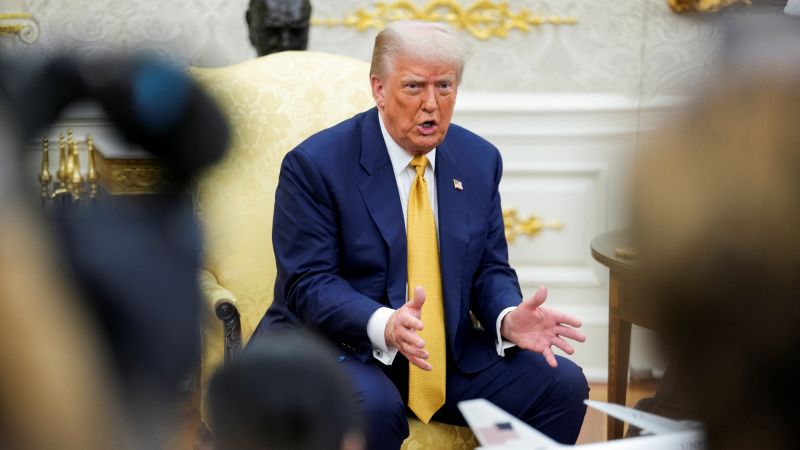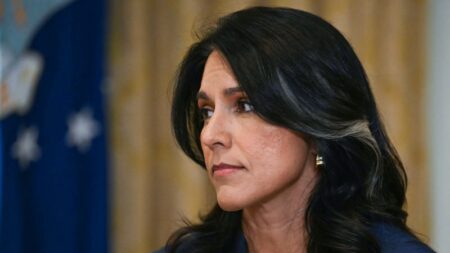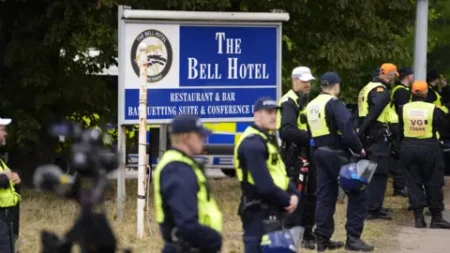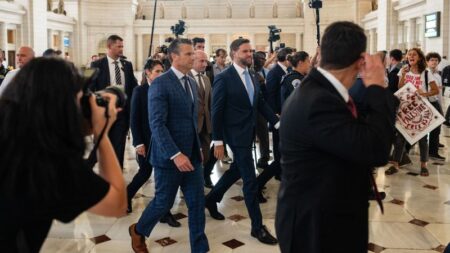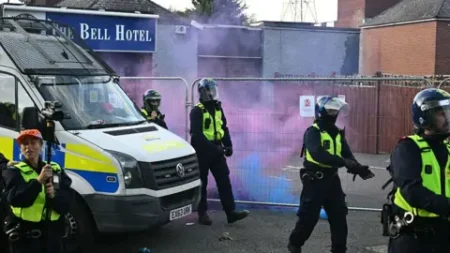The dynamics between former President Donald Trump and his predecessor Barack Obama reveal a profound, unresolved tension that has evolved markedly since Trump’s ascent to power. The two leaders’ sole substantive meeting occurred on November 10, 2016, merely days after Trump won the election, marking Trump’s first visit to the Oval Office. The encounter, characterized by a palpable awkwardness, foreshadowed a contentious relationship that would unfold over the ensuing years.
Fast-forward nearly nine years, and their fraught interactions resurfaced in an entirely different context this week when Trump shared an AI-created video on social media. The provocative footage, appropriating elements from their 2016 meeting, depicted a dramatic, albeit fictionalized, scene in which FBI agents storm Obama’s office, apprehending him while Trump watches gleefully in the background to the tune of “Y.M.C.A.” This clear display of animosity demonstrates Trump’s long-standing fixation on Obama, who he frequently refers to by his full name, “Barack Hussein Obama.”
The revival of Trump’s grievances against Obama came during a week of intense scrutiny regarding Trump’s handling of sensitive files related to Jeffrey Epstein. In a press conference, Trump seized the opportunity to pivot from questions about Epstein to laden accusations against Obama, dubbing him a traitor. Critics interpreted this tactic as an evasion strategy, suggesting Trump sought to deflect attention from controversies affecting his administration. Trump’s longstanding resentments toward Obama have become well-documented, with aides noting that his vitriol has remained consistent both publicly and in private discussions.
Trump’s resentments toward Obama encompass both a strategic desire to dilute Obama’s legacy and visceral hatred for a figure he perceives as unjustly celebrated while also representing a substantive obstacle in his political career. Expressing this sentiment, Trump declared from the Oval Office, “Obama’s been caught directly,” framing his accusations within a broader context of rising distrust.
Within his first term, Trump’s grievances fluctuated from criticisms of Obama’s foreign policy to more fantastical claims regarding wiretaps at Trump Tower. However, after retaking office in January, Trump’s animosity largely shifted towards President Joe Biden, whom he portrays as passively compliant to his Democratic advisors’ perceived extremes. Recent events, including a friendly tête-à-tête between Obama and Trump at the funeral of former President Jimmy Carter, suggested a temporary thaw in their relationship. Trump even alluded to their apparent camaraderie post-event, claiming, “Boy, they look like two people [who] like each other,” only for that sentiment to swiftly dissipate as new, vehement accusations against Obama emerged.
In a press conference this week, Trump did not shy from using incendiary language, accusing Obama of treason. His claims, bolstered by a recent report from Director of National Intelligence Tulsi Gabbard, sought to counter the 2017 intelligence assessment that stated Russian interference aimed to aid Trump’s election. A bipartisan Senate Intelligence Committee report reinforced that assessment, yet Trump and Gabbard have contended that Obama manipulated intelligence to uphold a narrative supportive of Russian meddling. This narrative appears to conflate Russia’s activity in sowing discord via social media with attempts to modify electoral outcomes, a distinction importantly made by intelligence officials who affirmed no vote tampering occurred during the 2016 election.
The intensity of Trump’s rhetoric is underscored by his proclamations regarding the scandal being the “biggest in American history” and his assertion that Obama was central to orchestrating a coup alongside Hillary Clinton. These claims prompted a reaction from Obama’s office, where spokesman Patrick Rodenbush dismissed Trump’s allegations as outlandish distractions. This response marked an exception to their typical avoidance of direct confrontations, highlighting the gravity of the situation.
Trump views the Russia investigation through a lens of persecution, framing it as a means by which foes conspired to undermine his legitimacy as president. His continued confrontation with Obama seems intertwined with his persistent goal of seeking retribution against those who questioned his administration, creating a contentious legacy characterized by animosity rather than cooperation.
Despite the overlap of their tenures coming to an end, Trump continues to blame Obama for the unrest that pervaded his first term. The ex-president’s remarks underline a lingering animosity stemming from events dating back to the birther conspiracy Trump propagated during Obama’s presidency, compounded by mockery directed at him during a 2011 Correspondents’ dinner. Trump’s aides interpret their relationship’s early cordiality as a facade, believing Obama harbored ulterior motives that ran counter to amicable cooperation.
In conclusion, the ongoing animosity between Trump and Obama is emblematic of a broader fracture in American political discourse. Their interactions have transitioned from mere opposition to a fervent rivalry – illustrating a departure from traditionally cordial relations between successors and predecessors. In the wake of such relentless grievances, the prospect for reconciliation remains dim, indicating that their deep-seated enmity is unlikely to fade from the public consciousness anytime soon.






